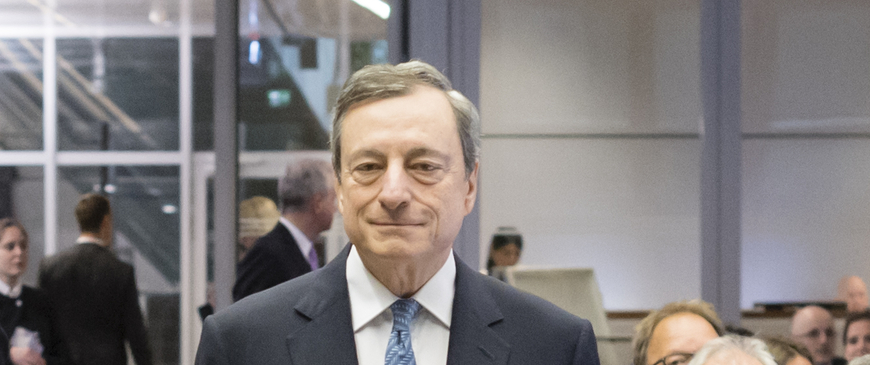
Mario Draghi is Italy’s best hope but the issues he'll face are huge
Mario Draghi, the former head of the European Central Bank, is set to be Italy’s next prime minister.
With political parties unable to agree on a way forward after Giuseppe Conte’s coalition government collapsed, Italy’s President Sergio Mattarella decided to turn to a non-political figure to break the deadlock and asked Draghi to form a government of national unity to steer Italy through its worst crisis since World War II.
Mattarella’s decision has paid off, as Draghi has secured support from a remarkably broad coalition ranging from the centre-left Democratic Party to Matteo Salvini’ right-wing League, which was pushed to join by its influential moderate faction rooted in Italy’s northern regions of Lombardy and Veneto.
With Draghi, Italy will have an authoritative and well-known prime minister. Draghi is an internationally respected figure thanks to his crucial role and political skill in rescuing the eurozone during the dual debt and banking crises. His competence will reassure financial markets eyeing Italy’s large debt stock: since he has been asked to form a government, interest rates on Italy’s government debt have already fallen significantly.
Draghi’s economic expertise also means he will be influential in shaping EU discussions about the bloc’s economic recovery. He will try to steer European economic policy away from a damaging return to fiscal austerity. And should the pandemic create further economic damage, Draghi is well-placed to push the EU to expand its €750 billion recovery fund launched last summer.
Draghi’s task is easier than that of some of his predecessors, especially fellow technocrat Mario Monti, who served as prime minister at the height of the debt crisis. Whereas Monti had to find ways to cut public spending, Draghi’s immediate task will be spending Italy’s share of the recovery fund, estimated at around €200 billion in loans and grants. The challenge will be spending the money in a way that increases the country’s growth potential.
Beyond spending the recovery fund, it will be tough for Draghi to enact long-called-for reforms to strengthen Italy’s economy, like reforming its administration. The fact that his government depends on such a disparate group of political parties will restrict his room for manoeuvre and make it hard to reach consensus. And while Draghi could, in theory, remain in power until the next election in 2023, he may not want to serve that long and, in any case, will only remain prime minister for as long as his coalition holds together.
It’s difficult to overstate the scale of the challenges that Draghi faces. Italy’s economy shrunk by around 9 per cent in 2020 and its debt has now reached 159 per cent of GDP. Unemployment will probably rise, fuelling social discontent and putting pressure on many of the political forces who support Draghi, but particularly Salvini’s League, to withdraw their backing from his government.
These would be formidable challenges by themselves. But the situation would be much worse if COVID restrictions have to be kept in place beyond this summer. The current speed of the vaccination campaign makes this a distinct possibility. Italy, together with all other EU member states, is not receiving enough doses of the vaccine as a result of the European Commission’s mismanaged procurement. If the number of vaccinations remains at its current level, fewer than a third of adults in the EU will be vaccinated by September 2021.
Even if the speed of vaccinations increases substantially, it will be very challenging to inoculate most of Italy's (and of the EU’s) population by the end of the summer. Draghi and the EU will be blamed for a slow rollout of vaccines, especially if other countries have managed to complete their vaccination programmes at the same time. There is also the risk that vaccine-resistant COVID variants will spread, increasing the likelihood that lockdown measures will be necessary for longer. The damage to Italy's economy, finances and social fabric would be very severe.
Draghi’s experience and authority mean he is Italy’s best hope to overcome political divisions and steer the country through its toughest challenge since WW2. But the challenges that Draghi confronts are not unique to Italy – the EU faces them too. The setting up of the recovery fund this summer was a very important step which saw the EU issue own debt for the first time, but a larger package will almost certainly be needed to ensure the continent’s economic revival.
Europe’s leaders will also have to step up to the challenge of vaccinating their citizens quickly and increase production capacity for any follow-up vaccines needed to deal with COVID mutations.
If they fail, voters won’t be kind at the ballot box.
Luigi Scazzieri is a research fellow at the Centre for European Reform.
